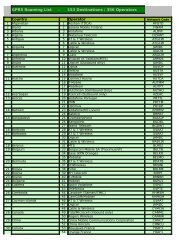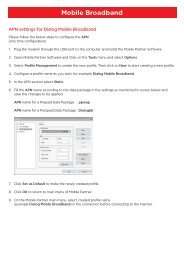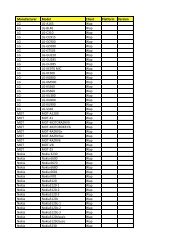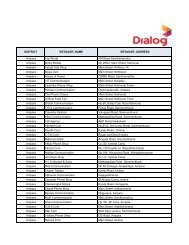Annual Report 2012 - Dialog
Annual Report 2012 - Dialog
Annual Report 2012 - Dialog
You also want an ePaper? Increase the reach of your titles
YUMPU automatically turns print PDFs into web optimized ePapers that Google loves.
(d) Fair value of derivatives and other financial instruments<br />
<strong>Annual</strong> <strong>Report</strong> <strong>2012</strong> l <strong>Dialog</strong> Axiata PLC l 77<br />
Certain financial instruments such as investments, derivative financial instruments and certain elements of borrowings<br />
are carried on the statement of financial position at fair value, with changes in fair value reflected in the statement of<br />
comprehensive income.<br />
Fair values are estimated by reference in part to published price quotations and in part by using valuation techniques. The<br />
fair value of financial instruments that are not traded in an active market is determined by using valuation techniques. The<br />
Company and the Group use its judgment to select a variety of methods and make assumptions that are mainly based on<br />
market conditions existing at the end of each financial reporting period.<br />
(e) Impairment of non-current assets<br />
The Company and the Group test annually the indicators to ascertain whether non-current assets (including intangibles) have<br />
suffered any impairment, in accordance with the accounting policy stated in note 2.4 and 2.5. These calculations require the<br />
use of estimates.<br />
(f) Defined benefit plan - Gratuity<br />
The present value of the defined benefit plan depends on a number of factors that are determined on an actuarial basis<br />
using a number of assumptions. The assumptions used in determining the net cost (income) for defined benefit plan include<br />
the discount rate, future salary increase rate, mortality rate, withdrawal and disability rates and retirement age. Any changes<br />
in these assumptions will impact the carrying amount of defined benefit plan. The Company and the Group determine the<br />
appropriate discount rate at the end of each year. This is the interest rate that should be used to determine the present value<br />
of estimated future cash outflows, expected to be required to settle the defined benefit plan. In determining the appropriate<br />
discount rate, the Company and the Group consider the interest yield of long term government bonds that are denominated<br />
in the currency in which the benefits will be paid, and that have terms to maturity approximating the terms of the related<br />
defined benefit plan. Other key assumptions for defined benefit plan are based in part on current market conditions (Note 24)<br />
(g) Asset retirement obligations (ARO)<br />
ARO applies when there is a legal or constructive obligation associated with the retirement of a tangible long-lived assets,<br />
and the liability can be reasonably estimated. The assumptions used in determining the ARO include the discount rate,<br />
inflation rate and the period after which the liability is expected to crystallize.<br />
(h) Provisions<br />
The Company and the Group recognise provisions when they have a present legal or constructive obligation arising as a<br />
result of a past event, and it is probable that an outflow of economic benefits will be required to settle the obligation and<br />
a reliable estimate can be made. The recording of provisions requires the application of judgments about the ultimate<br />
resolution of these obligations. As a result, provisions are reviewed at each statement of financial position date and adjusted<br />
to reflect the Company’s and the Group’s current best estimate.<br />
(i) Contingent liabilities<br />
Determination of the treatment of contingent liabilities in the financial statements is based on the management’s view of<br />
the expected outcome of the applicable contingency. The Company and the Group consult with legal counsel on matters<br />
related to litigation and other experts both within and outside the Company and the Group with respect to matters in the<br />
ordinary course of business.



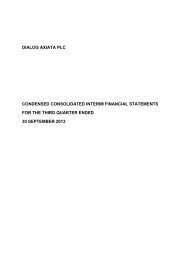
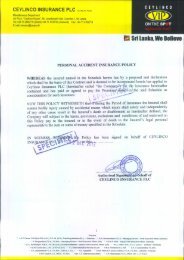
![nrypq;Nfh ,d;#ud;;]; nfhk;gdp ypkplw - Dialog](https://img.yumpu.com/15429071/1/190x245/nrypqnfh-dud-nfhkgdp-ypkplw-dialog.jpg?quality=85)
